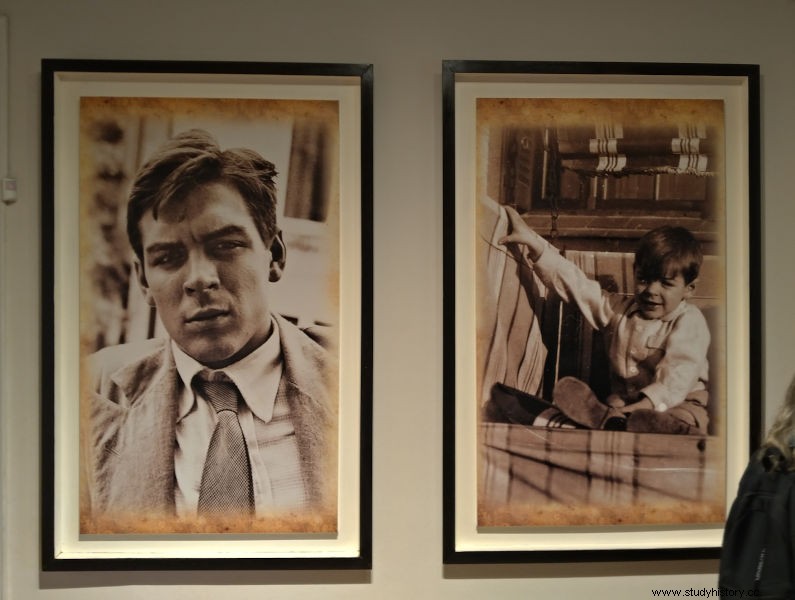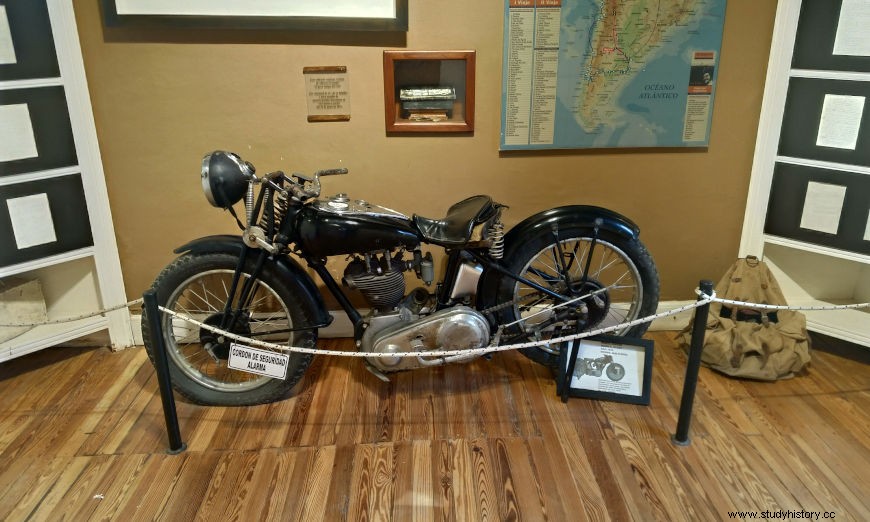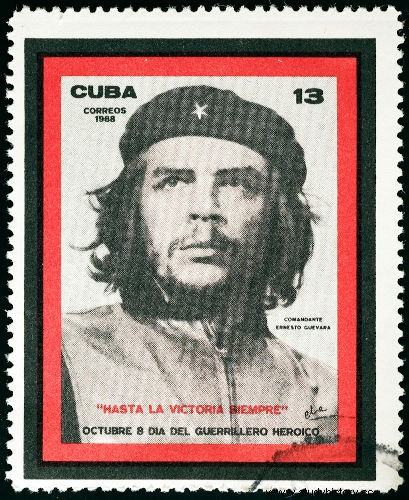Che Guevara was born in Argentina, trained as a doctor and is known for being a revolutionary who actively participated in the Cuban Revolution, which defeated the dictatorship of Fulgencio Batista in 1959. He also participated in revolutionary outbreaks in Congo and Bolivia, but was not successful in neither of those two places.
Che Guevara gradually became a revolutionary. Interested in reading, he read authors like Marx and Lenin in his youth. The progressive experiences that he witnessed in Bolivia and Guatemala and the poverty of the population, perceived in his travels, made him adhere to the revolutionary struggle.
Read more :Hugo Chavez - trajectory of a South American politician who defended Bolivarianism
Birth and Youth

Ernesto Guevara de la Serna was born on June 14, 1928, in Rosario, Argentina. He was the son of Ernesto Guevara Lynch and Celia de la Serna, and his family consisted of four more brothers, all younger. When Che Guevara was born, she enjoyed a good financial condition due to the wealth inherited from her parents.
Despite being born in Rosario, Che lived in Buenos Aires for the first four years of his life, and even later his parents decided to move to Alta Gracia because Che Guevara had problems breathing (asthma). They then concluded that the air in the mountainous region where Alta Gracia is located would be good for his lungs, after being guided by a doctor.
Che Guevara spent his entire childhood and adolescence in Alta Gracia , where he made friends and where he studied. There, the house that Che and his family lived in is known as Villa Nydia and is currently a museum that recounts the details of the famous revolutionary's life. In Alta Gracia, he did his primary education, and in Córdoba, a nearby city, he did his secondary education.
University and Travel

As a teenager, Che's family faced financial problems because his father's company filed for bankruptcy and his parents divorced. These events led her to move to Buenos Aires. There, Che lived in his maternal grandmother's house , in 1947, and the following year, he began to study at the University of Bueno Aires .
The university period was one of great discoveries for Che Guevara. He took the course in Medicine , he reconciled his time with some work, and also devoured books, among them were readings like Lenin and Marx . Here, Che was just a curious young man interested in the world and reading. It would be other life experiences that would awaken the revolutionary ideals in him.
During this period, Che Guevara also took the time to make some trips, of which three stand out:one in northern Argentina and two in Latin America. These trips had a great influence on the way Che thought and saw the world and its problems. The first one took place in 1950, and in it, he explored northern Argentina.
This trip through northern Argentina happened on a motorbike that accompanied him for a distance of 4500 km . Along the way, he visited a friend from Córdoba and visited places like Tucumán and Jujuy. When he returned to Buenos Aires, he continued his studies at the university.
Still in 1950, he met María del Carmen Ferreyra, also called Chichina. She was the daughter of one of the wealthiest and most influential families in Cordoba, and she soon fell in love with him. The feeling was mutual, and Chichina and Che began a flirtation, but the differences in their conditions caused her family to reject their daughter's marriage to him.
In 1951, Che spent a few months working on a YPF oil tanker, and the following year he began his first voyage to Latin America . On this trip he and his childhood friend, Alberto Grenade, decided to explore the South American continent on a Norton motorcycle of 500 cc.
The details of the adventure were reported by Che in a journal, and this habit of recording his days followed him to the end of his life. The motorcycle used on the trip was still damaged in Chile, and Che and his friend went on to Peru, Colombia and Venezuela. This trip, added to the experience in northern Argentina, aroused Che's attention to the poverty of the population .
He and Granado were traveling from January to July 1952, and then Che completed the last months of his medical course, obtaining his medical degree in April 1953. July of that year, he made his second trip to Latin America , this time being accompanied by Carlos Ferrer , another childhood friend.
First they went to Bolivia , where Che found a revolutionary movement underway . Then he passed through Peru and Ecuador, where he parted ways with his friend, and then on to Guatemala. In that Central American country, Che Guevara structured his revolutionary thinking.
In Guatemala , Che found a progressive government that sought to make reforms, such as agrarian reform. The Guatemalan government was presided over by Jacobo Arbenz, and the model of reforms being implemented there displeased the United States. Thus, Guatemala was accused of having a communist government and a coup was orchestrated by the Americans.
This coup was carried out by the military, and soon after it, Che, who had contacts with Marxists and communists, took shelter in the Argentine embassy. Before the coup, Che had had a lot of contact with Cubans who were part of the July 26 Movement , who fought against the dictatorship of Fulgencio Batista.
It was from this contact with Cubans that Che Guevara received “Che” as a nickname. It is believed to be a colloquialism for “companion ”. After Guatemala, he went to Mexico, where he went to work in a hospital. In Mexico he also met Raúl Castro and Fidel Castro , the two leaders of the 26th of July Movement.
Read more :Cold War - understand the context of tension in which the Cuban Revolution was inserted
Performance in the Cuban Revolution

Che Guevara joined the 26th of July Movement and was one of 82 crew members aboard the yacht Granma, the yacht that took the revolutionaries to Cuba. There, they were attacked, most of the guerrilla members died, and those who survived settled in Sierra Maestra , a mountainous region.
It was his involvement with the Cuban Revolution that transformed Che Guevara into an internationally known personality. He commanded troops, trained soldiers, and when Fulgencio Batista's dictatorship fell on January 1, 1959, he became one of Cuba's most important men.
He received Cuban nationality and assumed several positions in the Cuban government, such as the Ministry of Industry , the management of the National Bank , between others. Che Guevara was one of the defenders that Cuba should, from the beginning of the new government, ally itself with the Soviet Union because he knew that the Cuban project would arouse American ire and the country would be the target of a coup attempt.
Che's prediction was right. The United States conspired against the Cuban government, not because it was socialist, because the Cuban Revolution was nationalist , but because the new government's actions, such as the nationalization of properties, interfered with the interests of US companies located in Cuba.
In addition to the attempts to assassinate Fidel, the US government organized anattempted invasion of Cuba, in the Bay of Pigs, in 1961. The invasion failed and contributed to pushing Cuba into the sphere of influence of the Soviets. Che remained in the functions of the Cuban government until 1965.
Login also :Missile Crisis - one of the biggest crises in Cold War history
Death
After 1965, Che Guevara decided to return to the revolutionary struggle. He participated in actions in Congo and in Bolivia , but both failed. In Bolivia, he was ambushed by Bolivian army troops, wounded and arrested on October 8, 1967. The next day, October 9, he was executed . His remains were found in 1997 and taken to Cuba, where they are deposited in a memorial.
Image credits
[1] Personal File/Daniel Neves
[2] spatuletail and Shutterstock
